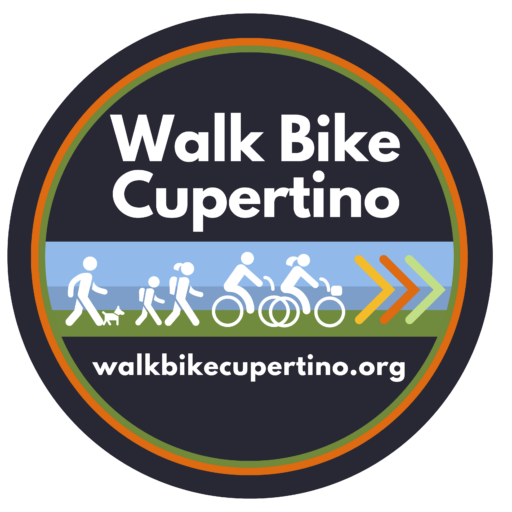In February, our Santa Clara County Sheriffs met with Safe Routes to School Working Group members to answer their questions about key traffic enforcement questions, especially around schools. Safe Routes to School Coordinators Birgit Werner and Chelsea Biklen moderated, with Deputy Renteria and Sargeant Belligan representing the West Vally Division of the SCC Sheriff. Below is a recap of the questions and answers from that session.
Birgit Werner, Safe Routes to School Coordinator Our presenters today are our [Santa Clara County Sheriff West Valley Division] traffic deputies. If you’ve ever had a meeting with either of them, they have this amazing ability for multitasking. They’re listening to the traffic radio, they’re talking to you, and they’re probably yelling at a kid who doesn’t have a helmet on his head all at the same time, and somehow they’re keeping it all straight.
Today, they’re going to take questions that you all submitted earlier. It was very interesting to get all the questions and they were wide ranging. There were also many duplicates so I combined those questions and made one question out of three very similar questions. Let’s start.
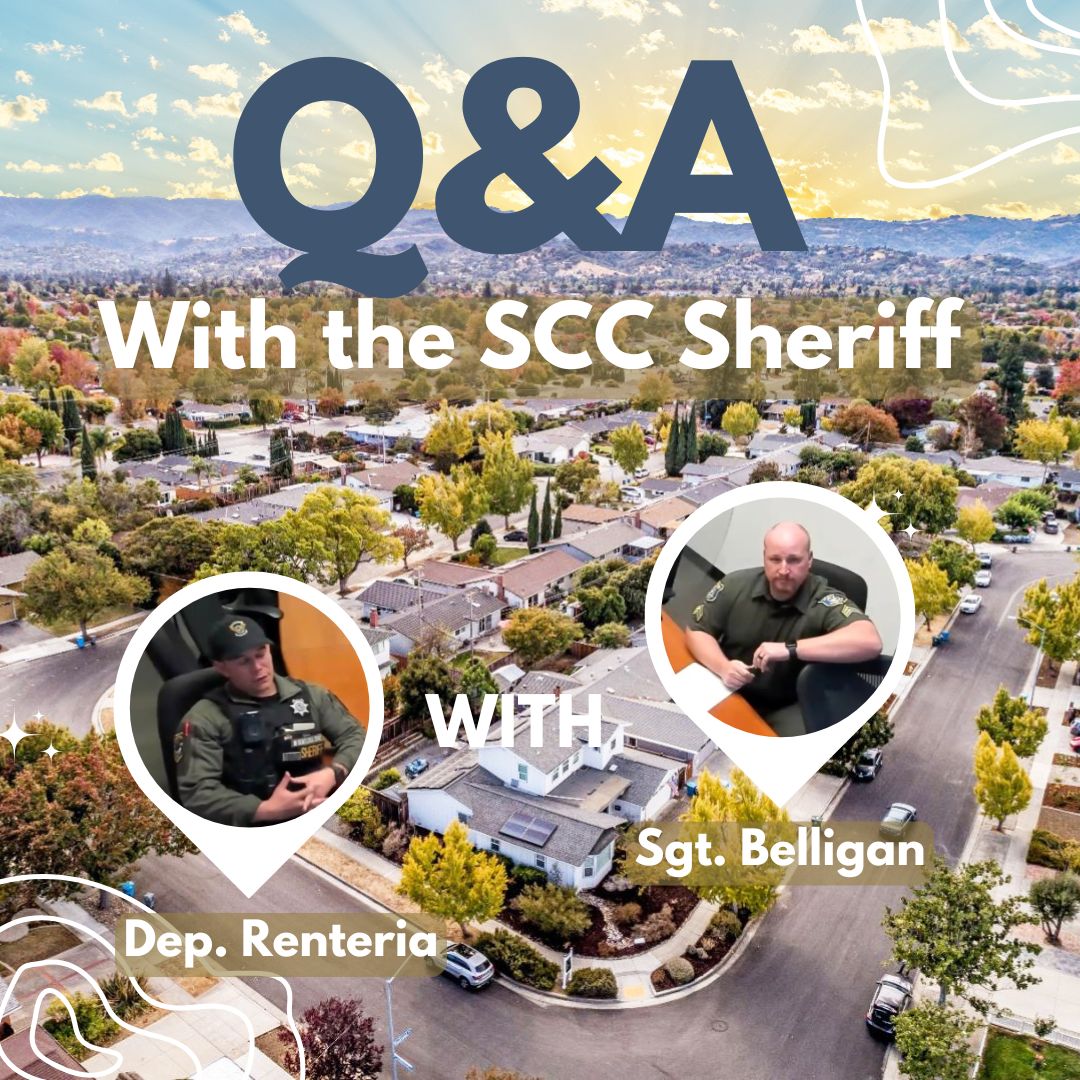
Staffing
Chelsea Biklen, Safe Routes to School Coordinator How many traffic deputies are there in Cupertino? How are they typically deployed? Specifically, how do they cover school drop-off and pick up traffic?
Deputy Renteria We have a total of 8 traffic deputies in the traffic unit. But we’re all responsible for Cupertino, Saratoga and Los Altos Hills, which means we adjust depending on needs, complaints and target enforcement. But we typically have around five assigned to Cupertino and then usually it’s two to five during the weekdays again, depending on training, or other calls for service or something like that.
[For] school drop-off and pickups, we respond to traffic complaints received from public phone calls, from dispatch, and from citizen flag downs. When we’re on our motorcycles, we get flagged out. Often we get lots of questions, comments, concerns, and information provided from you guys or 311 also depending on what’s going on. We also focus on high traffic areas, such as main thoroughfares like Stevens Creek and De Anza Boulevard, Rodrigues and Torre, lots of different areas where there’s high congestion or pedestrian traffic. We do rotate monitoring the school drop off. Some have a late bell schedule in the morning, so we like to go to the earlier [bell schedule] one, so we can provide the service to them before the late bell schedule goes and then we can assist with traffic monitoring at those later schedules. It allows us to spread out a little bit more each time or opportunity. We have to go to the schools, and then we kind of just adjust where we go throughout the week, depending on calls for service or complaints at schools.
Yielding to Pedestrians
Birgit Werner A lot of cars don’t yield to pedestrians and crosswalks about how many cars are cited for this per month in Cupertino? If an officer is present, do they stop the motorists(Sunnyvale police say they do not enforce this at pickup and drop off because cars need to get through, too).
Deputy Renteria We can’t speak for Sunnyvale because they have different policies or there may be a reason why they couldn’t. At that time we don’t know but for us the numbers do vary, so we don’t have a specific number to provide, but we do frequently, and especially me. I frequently cite drivers for making turns in front of pedestrians, not stopping before the crosswalk, which is impeding the pedestrians. So it does vary. It could be a lot or a little bit depending on our traffic, monitoring and ability to make those traffic stops. But we do monitor, especially in high pedestrian areas like I explained in the previous question.
We also conduct targeted enforcement. That’s when a group of us—either the whole team or up to about 6 people on the team— go out to a specific location, specifically a crosswalk, and we have a decoy walker who crosses, and we enforce the pedestrian crosswalk code and cite drivers. That’s how we take care of some of the complaints or specific areas of concern with crosswalks.
Birgit Werner Do you ever need volunteers to be the decoys?
Sargent Belligan It’s usually me, so…there’s probably some liability behind it, because I almost get hit every time.
Dino Sakkas So how far across the crosswalk does a person have to be, even if it’s divided? Do they have to be halfway across before traffic can go, or can they just cut right behind you as long as they miss you? What’s the general rule, because I see people trying to get in the crosswalk, but they’re on the other side of the street and the cars are in a rush to get through?
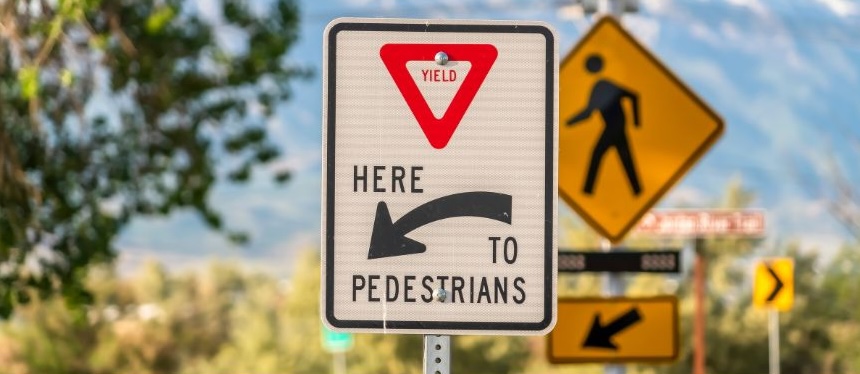
Deputy Renteria The vehicle code states that it’s got to be reasonably safe for that pedestrian to cross. Are they walking in the Number two lane approaching where the vehicle is going to turn and then the vehicle goes in front of them? That’s unsafe because the pedestrian has the lawful authority to be in the crosswalk and cross, and they should be protected. It’s discretionary for the officer. Is it safe for that person to cross? Is that driver in a hurry, speeding off right behind them? That makes it unsafe, because if somebody drops something, if a paper fell down or anything like that, they would have to turn back. We want that pedestrian to be safe, so there’s no distance [measurement such as] a foot or 2 feet. It’s more of [is it] reasonably safe.
Dino Sakkas Okay, that makes sense. At the corner of De Anza and Westland, at the gas station there, there’s this food truck that goes in and parks about between two to 15 feet from the crosswalk, so you really can’t see the crosswalk. It’s a concern for me because my neighbor was hit there— broke his hip, fractured his hip in two locations, and it was a guy that just came around the corner, made a right on red and couldn’t really see him. How do I get the curb painted red or something? Because I know there’s daylight laws where they can’t park too close to a crosswalk, but I don’t know how to make that happen. And actually, if you’re there, please take a look. They come every day during lunch, and sometimes they’re really close, and sometimes they’re not depending on where the cars are parked.
Deputy Renteria I’m going to come back to a question about the daylighting and discuss it further there. But that law just came into effect this year. Generally there’s a kind of cooling off period where [there are] warnings or education before enforcement. I will be discussing the [daylighting] code and how we’re going to handle it.
Cars entering the bike lane to turn right
Chelsea Biklen Drivers are also supposed to move behind cyclists in the bike lane before making a right turn and not cut in front of the cyclist. How is this enforced?
Deputy Renteria The vehicle code for entering in the bike lane and traveling a bike lane is code 22.109, subsection A subsection 3. It says a vehicle can enter it within 200 feet. If they’re beyond that 200 feet, then they’re in violation. Generally there’s broken lines in the roadway when you approach an intersection. That’s a bike lane that’s green, but it has the broken lines. If a vehicle passes a bicyclist before that then they’re authorized to be in that lane of travel to make that right turn. The issue comes when they’re beyond that 200 feet and they’re driving in the bike lane or it’s an unsafe turn limit where they’re not within that 3 feet law for bicyclists, or it’s an unsafe turning movement in front of that bicyclist.
Sharlene Liu Suppose the bicycle is within the dashed line area, and so is the car, and the car wants to make a right turn. They’re both within 200 feet of the intersection. Then at that point the car drives in front of the bike and makes a right turn. Would that be considered a right hook? And would you be giving a ticket for that?
Deputy Renteria No, unless it’s done unsafely. So if they just entered, if they’re making the right turn and they’re within a few feet, and that car tries to go around them or make the turn. Then yes, that would be a violation, because they have the right of way to make the right turn, and if the vehicle can’t do it safely, there’s a safety issue and a movement issue with that. But if they’re in the broken [bike lane] line section and the vehicle goes up ahead because it’s within 200 feet, goes ahead and then gets over, that’s fine. But as long as it’s safe–that’s the biggest takeaway from it. As long as it’s a safe maneuver, that’s fine.
Sharlene Liu How do you determine if it’s safe?
Deputy Renteria If you turn in front of a vehicle without using your turn signal or you’re too close to that other vehicle to make it unsafe. You didn’t give enough time. You have to use your turn signal within 100 feet of making that turn to make a safe turn. If the bicycle doesn’t see you, you still have to use your turn signal to indicate that you’re turning. If you’re not able to safely make that right turn, then you’re in violation of the turning signal movement, which is 22.107.
Sharlene Liu In the past, have you given tickets for drivers making unsafe turns like that?
Deputy Renteria I don’t recall. I worked in Saratoga when I first got on the motorcycle team, and there were some issues with parents parking too far past the 200 [foot] line, and that’s where we enforce that but not anything that I cited for overtaking a bicyclist in that scenario. Usually they either pass them in some fashion, get over, and then make the right turn., So no, I have not that I can recall.
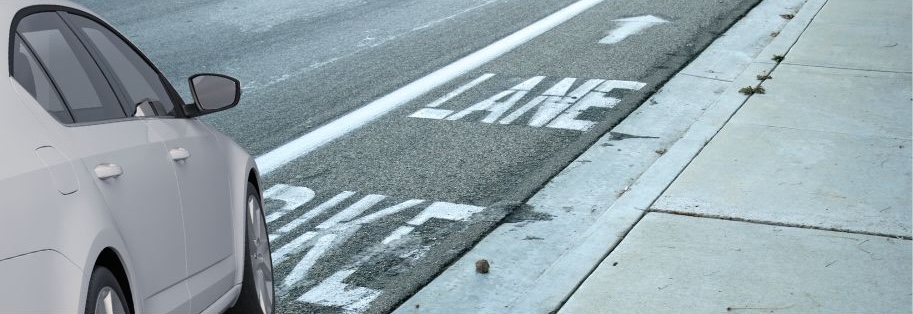
Deputy Renteria I don’t recall. I worked in Saratoga when I first got on the motorcycle team, and there were some issues with parents parking too far past the 200 [foot] line, and that’s where we enforce that but not anything that I cited for overtaking a bicyclist in that scenario. Usually they either pass them in some fashion, get over, and then make the right turn., So no, I have not that I can recall.
Tim Oey Yeah, I have the cutoff situation where motorists will pass me and take a right in front of me, as I’m trying to go straight. A lot of motorists don’t realize that they’re supposed to actually merge into the bike lane. Most of them drive in the main traffic lane and then suddenly just cut across the bike lane like it wasn’t there.
Deputy Renteria Well, everybody that gets a license has to read. The DMV Manual has to show in a test that they could drive safely. That’s more of a driver habit issue where they don’t realize it or just they’re in a hurry or not paying attention. So in those cases, if they’re turning right in front of you to make a turn, because they don’t either know where they’re going, or they’re just trying to pass you. That’s unsafe. If we view that while we’re monitoring or driving by, we’ll make a stop for those violations. We don’t have any program regarding driver safety.
Stopping/Idling in the bike lane in front of schools
Chelsea Biklen Several schools have parents that park or idle in the painted green bike lanes with signs saying “no parking at drop off or pickup”, such as Collins Elementary. Cupertino Safe Routes has encouraged parents with directions and rule sheets to drive around the block and not to block the bike lane. But the behavior continues. Are citations given to drivers for this behavior?
Deputy Renteria Another deputy and I saw you guys out there trying to divert the traffic to kind of build a route for the parents to travel. Unfortunately, it’s within 200 feet. There’s no broken line there, but they’re making a right turn movement into the school. We looked on Google Maps and 200 feet from the entrance is just south of Twilight Court. There’s a “keep clear” section. After the keep clear, they’re allowed to be in that bike lane to make the turn movement. [South of] that keep clear they should be in the lane of travel and not be in the bike lane, or else they could be cited for being the bike lane past Twilight on the south side. So again, yes, they can be in there. I’ve sat there many times. We did see you guys there. It’s really hard, because it’s a one lane roadway. If there were multiple lanes, then they’d be able to merge over and pass. But unfortunately they’re making the right turn lane in the bike lane as long as the vehicle is on and they’re not in Park. Then they’re allowed to be in that lane.
Dino Sakkas Here’s the case at Lincoln [Elementary]. I guess they’d have to have the car in drive and have their foot on the brake [sometimes]. But a lot of times, the brake lights aren’t even on [though] they’re there for 10 min, 15 min, parked in the bike lane, which isn’t wide enough for a car. So they’re partially blocking travel. It’s a disaster. When you’re on a bike, you’ve got to go out into traffic right in the middle of that. It’s in a Keep Clear area, and it’s got a crosswalk right there. It’s a disaster. I stop and I tell them “You cannot park here, sir” and they don’t move. They just close the window.
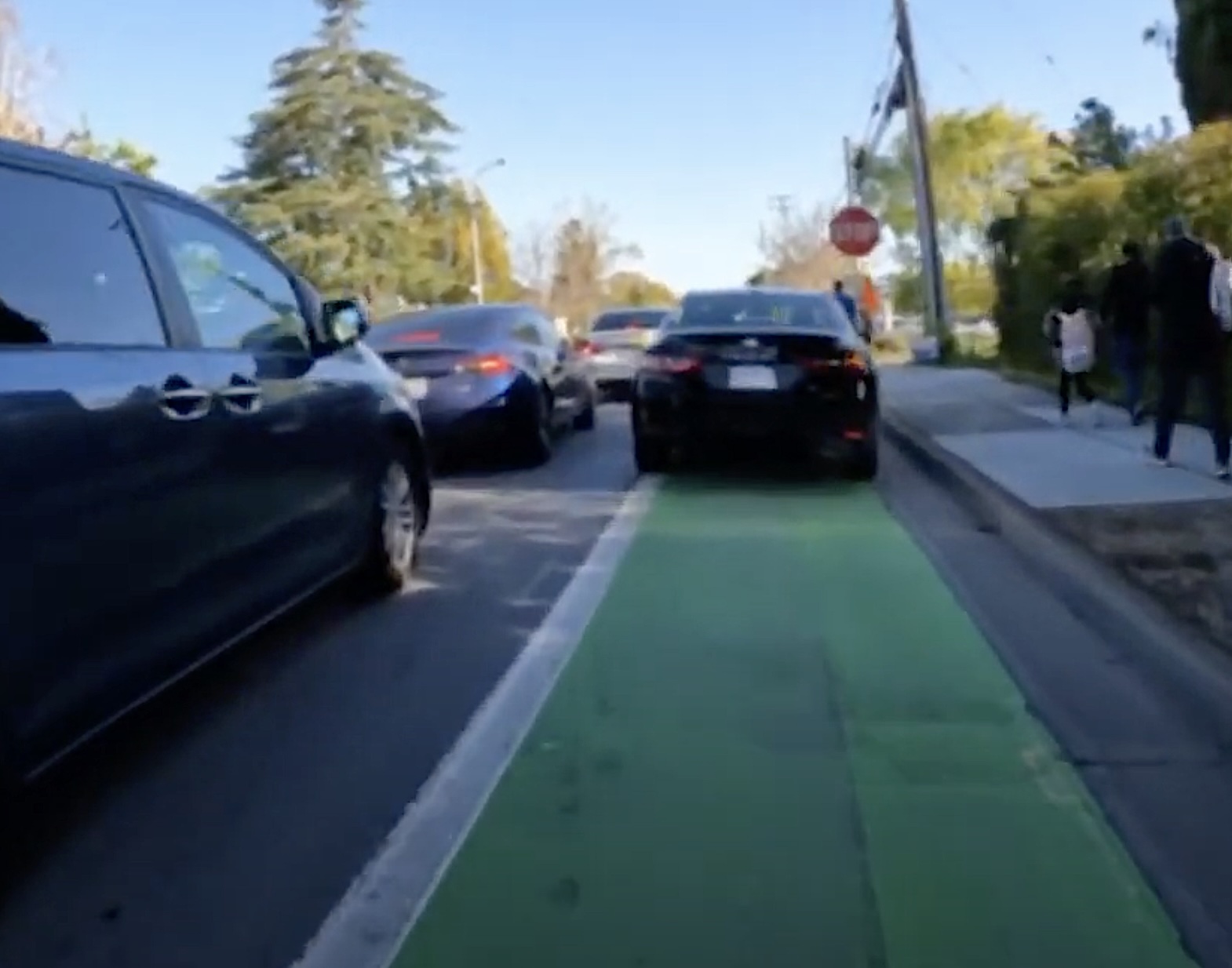
Cars idling/parked in the bike lane at Collins.
Deputy Renteria Is it the westbound lane, or the eastbound lane?
Dino Sakkas It is eastbound. It’s on the school side. The left hand queue is full. They’re making a right, and they just park in the bike lane, at least three cars. It’s probably the same cars. I got pictures of them. If you want, I’ll go out there, take pictures of them. They just ignore me. I don’t know what to do. There’s usually two cars there, two or three, a white Tesla and a van.
Deputy Renteria We can message you offline and talk about it and get some information. And we can monitor that and enforce as necessary there.
Dino Sakkas I guess if they’re there for a few minutes, I mean, put on the brake and [stay in] drive doesn’t really mean they’re not parked right? They’re parked.
Deputy Renteria If they’re parked there and out of the vehicle, then that’s a violation.
Dino Sakkas Oh no, they’re in the vehicle.
Deputy Renteria They’re waiting for pickup or drop off?
Dino Sakkas They’re waiting for pickup. Yeah, so it’s 2 o’clock or something.
Deputy Renteria Oh, for pickups. Okay. We’ll follow up with you on that, and we’ll take a look and see what we could do to clear it up or enforce as needed in that area.
Dino Sakkas They might not realize. I wonder if we could paint the curb red or something, I mean, or put some signs up to say, don’t park here because I don’t. I don’t know that they [know it’s not ok]. Is there a mechanism for that?
Deputy Renteria It would be a city request.
Sharlene Liu Instead of saying “no parking”, would a sign that says, “no stopping” be clearer to tell them they can’t stop there, even if their engine’s running and their foot is on the brake?
Deputy Renteria That’s going to be a signage thing with the city. [They would have to] put up a sign that says, no idling, no parking, standing—whatever signage that pertains to the enforceable codes for us. We use a specific code. If you’re in violation of those signs like parking in a bike lane, or making a U-turn where there’s a “no U-turn” sign. Something like that would be enforceable.
Sharlene Liu What I’m wondering is, what is the difference between no stopping and no parking from the driver’s point of view?
Deputy Renteria There’s no stopping, is: you can’t stop there. No parking is: you can be in the lane as long as you’re not parked in that lane.
Sharlene Liu [So that means] you can stop there in it, not in park, but in you know, some forward or some gear, and then with the engine running and your foot on the brake. Then that’s allowed where it says no parking.
Sgt. Belligan Yes, technically, yes. The sign would have to say, no stopping.
We had this issue in Saratoga a couple of years ago. At one of the schools, because that’s what the parents were doing, just sitting there. A couple of them would get tickets for being parked. But we had them change the signs to say, no stopping. If you guys get it to [say] that, then we can start enforcing that. But until that’s changed, unless we can determine they are actually in park, then they’re allowed to be there in the queue, ready to make that right.
Sophia Chan I think we talked about this with David [Stillman, Transportation Manager for the City of Cupertino] that unless you put those little bollards kind of like in front of Homestead High, people are going to park, because there isn’t that many places to kind of hang out and wait to pick up your child. We have the same problem with Monta Vista. The parents are lined and queued up. So I think if you don’t want cars to even be waiting there, you just have to stick those bollards that I saw being effective on Homestead High. I think you could put signs there, but people will still park—not parked, but idle, whatever. But if you stick those barrier things on there, then nobody can really get in there.
Santosh Rao Speaking for myself only as a resident, but also as a parent rep. I have to say that we need to have some empathy. I feel like the entire range of questions seem to be sort of anti auto drivers. I feel like every question has been how do we stick it to these auto drivers? And it’s just parents trying to do their thing and getting kids to school as safely as they can. Bad drivers need to be punished. But at the same time let’s have some shared empathy for the collective modes of transport here.
Birgit Werner Well, thank you. If it’s okay, we’re going to table the rest of this discussion because we’re kind of segueing into a broader discussion.
New Intersection Daylighting Law
Chelsea Biklen Yes. So the next question, What is the new daylighting law? And how will it be enforced?
Deputy Renteria Assembly Bill 4.13 amended the vehicle code 22.500, to add the subsection 10, which specifically deals with daylighting. It’s expanding the list of places where vehicles are prohibited from stopping or parking within 20 feet of a vehicle approach side of any marked or unmarked crosswalk or within 15 feet of any crosswalk where a curb extension is present. It provides that [even] if the area is not marked with a paint or sign, beginning January 1, 2025 a citation may be issued.
We’re almost mid- February now. This is kind of that time period where we’re gonna start looking into enforcement or education, because I’m sure a lot of people don’t understand this law yet, or know that it’s been added. I’m trying to think of places I’ve ridden by or driven by where I’ve seen it. It’ll be something that we would be looking out for more, like Dino said about the food truck. If it’s parked over the 20 feet [from the intersection], then it’s fine, as it’s a parked vehicle at that point and [there would not be a reason] to cite for or to request them to move. If it’s within that 20 feet, then we can definitely cite or depend on the deputy’s discretion {made hand movement to say ‘do something’}..
After subsequent discussions after this Q&A with Walk Bike Cupertino, the Sheriff has confirmed that they are beginning to enforce the daylighting law (with citations) near our CUSD and FUHSD school crosswalks. Parents and administration staff are being notified that enforcement is beginning via standard school information channels.
Sharlene Liu How much is the fine?
Deputy Renteria [It’s] 22.500, so it’d probably be similar to the other 22.500 sections. Because it’s a vehicle code, I’m not sure if the city has its own fine amount because there’s different sections where a county violation could be $45 to $60. But the city’s fee is $81, I believe. We have to find out which one it reflects.
New Move-Over for Bikes Law
Birgit Werner The Move-Over Law AB1909 requires drivers to change lanes [when] pass[ing] bicyclists, if possible, even if there is 3 feet of clearance available without changing lanes. How is this being enforced?
{Deputy Renteria had to leave the meeting at this point.}
Sgt. Belligan The vehicle code covers it. It [says] a driver of a motor vehicle should not overtake or pass a bicycle bicyclist proceeding in the same direction, of a distance of less than three feet. [The new law] talks about if any other lane of the traffic is available, the driver should make a lane change into the available lane with due regard for safety and traffic conditions. Notice the should. It’s not saying shall, and at the very end it says, if practical. Within that section there’s a subsection that says: if the driver of the motor vehicle is unable to comply with that subsection due the traffic roadways (basically a one way road) then the driver shall slow to a speed that is reasonable and prudent, and may pass only when doing so would not endanger the safety of the operator of the bicycle, taking into account the size and speed of the motor vehicle and bicycle traffic conditions, weather visibility, surface and width of the roadway. It kind of explains it. Basically they’re still able to pass them as long as it’s safe to do so. It’s kind of up to the deputies discretion, right? Whether they believe that that was an unsafe movement [and] if they were really close. I can’t speak to if [the officers have] been citing that specific code. I know that they cite people all the time. Specifically for that one, [the officer] would have to be in the right area at the right time to see that violation occur. So it’s a little tough. You gotta be in the right place at the right time to actually witness it.
Sharlene Liu But is it any tougher than any other moving violation where you also have to be in the right place at the right time?
Sgt. Belligan Well, not necessarily. If we’re getting complaints of a specific area that that is occurring at, I haven’t received that complaint in the last three years, such as {at] this exact location cars are passing me at an unsafe distance. We get complaints about speeding vehicles on a certain roadway. We can sit at that area, and we will get speeders, because that complaint is in that area. We’re set up for that speed. We shoot our radar. Stop signs. We have those exact locations. We can sit at the location crosswalk. It’s easier to target those violations.
Worst Driving, Walking & Biking Behavior
Chelsea Biklen In your observations, what’s the worst biking behavior in town? The worst walking behavior and the worst driving behavior near schools?
Sgt. Belligan [Deputies] said bicyclists not stopping at stop signs was a big thing for bicyclists. As far as walking, they said, parents with children, crossing in the street in front of traffic when there’s a crosswalk available nearby.
I don’t know if we touched on the driving near schools, but I can tell you that unsafe U-turns within a residential district is one that I know that they target at the schools very frequently. You can’t make the turn within like 200 feet of an approaching vehicle. There’s some other specific rules that the motor deputies enforce on that, and I know that they get those citations very frequently at the schools.
Santosh Rao I was wondering if the deputies might comment on the new e-bikes and e-scooters and what sort of expected traffic behaviors one should expect to see.
Birgit Werner Santosh, as a reminder the rules for this engagement are that we have pre submitted questions, and we want to run through all of those first. Please hold your question until we are done with those.
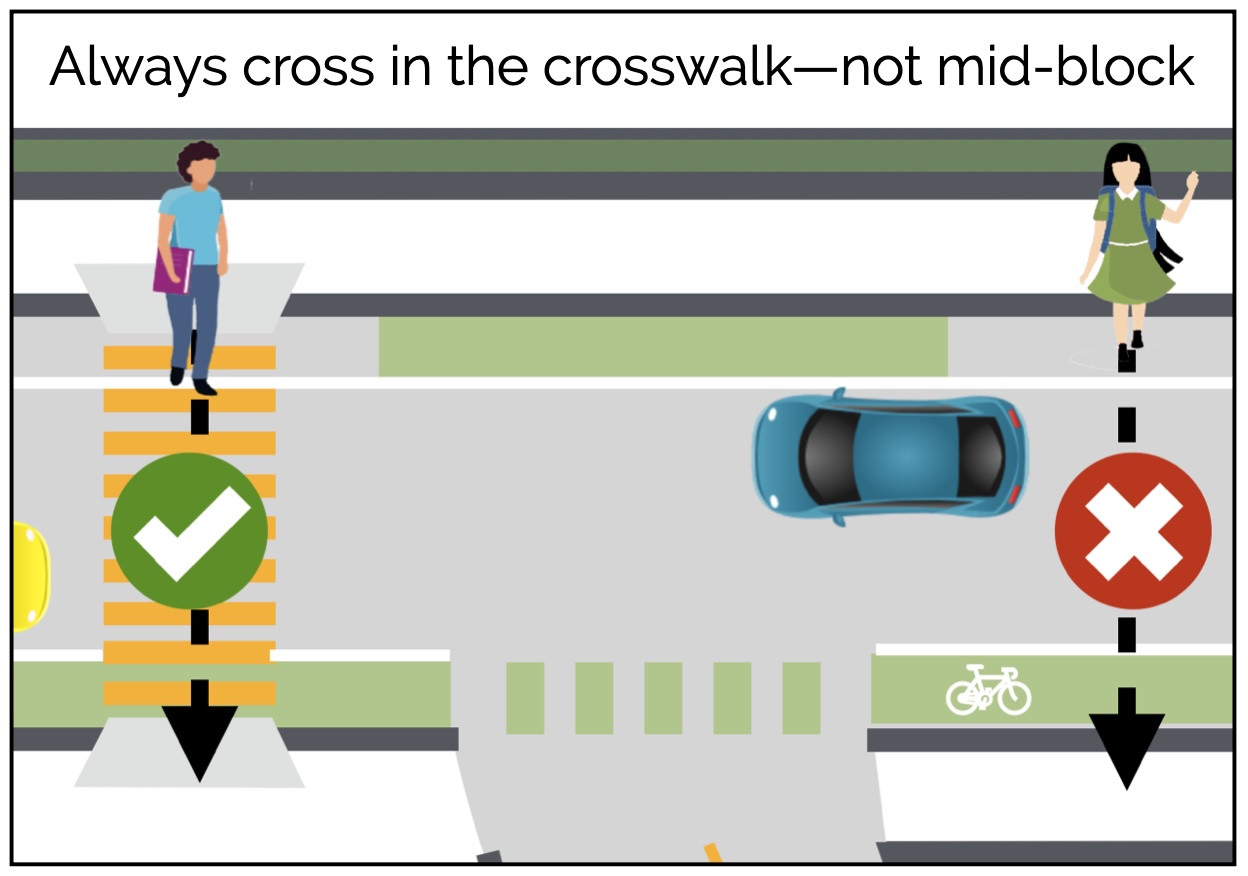
What can observers do when they see dangerous behavior
Chelsea Biklen What can students and parents do when they see dangerous behavior, such as U-turns, where kids are crossing or dropping off or kids in the street travel lane? We know the deputies cannot be in all places at all times.
Sgt. Belligan The biggest thing is don’t intervene. We don’t want you guys causing any disturbances unless it was like some clear thing where they’re about to hit a pedestrian in a crosswalk. Obviously, you can try to jump out and stop that but if it’s just something where obviously nobody’s gonna be injured in that moment or the pedestrians cleared but they did a violation, don’t intervene. You don’t don’t need to chase them down. It is helpful if you can take photos and gather information like vehicle description, license plate stuff like that. That is helpful. Just keep in mind that you are allowed to take photos of people right in public however people do get very defensive when that starts happening. So if you’re chasing someone down with your cell phone, just keep in mind that they might pull over and a confrontation might start. So if you’re gonna do it, be secretive. Just quickly snap a photo. But anyways, that information does help because we can follow up with that stuff.
We talked earlier about making the traffic complaint by calling our non-emergency dispatch number. The Cupertino 311 portal is another way. I get those complaints forwarded to me personally, and then I distribute them to our traffic units. We talk about them in our briefings in the mornings. Speaking with school staff members and city officials is another way right to get these complaints out there because we’re not gonna know about them unless you guys are telling us. And just to note that our traffic unit does follow up on all traffic complaints in the city.
Birgit Werner And I will second that. Every time we send Jeremy a request to go look at a spot or go see a behavior [it happens]. His guys are really good about going usually the very next day.
Motorcycles and E-bikes
Sgt. Belligan Alright. I have like 5, maybe 7 minutes, max [left to talk]. I can touch on that [previous question] real quick, since it’s fresh in my mind if you would like. To answer your question [about e-bike and motorcycle behavior], it gets very, very, very complicated with some new bicycles, because there are some that are actually motorcycles. You actually have to have a motorcycle license. It varies depending on the ccs and the power. And yeah, it’s too much to talk about right now. And I’d have to have like a 3 or 4 page fact sheet in front of me. We review it sometimes just to go over it. If it’s just a standard bike that just has some assistance, that’s an electric [bike]. There’s some speed limits that they have to be under as well to still qualify as a bicycle. I think it’s like under 15 or something like that. I’m just going off the top of my head. Those ones that’s just like a bike, though, even though they’re being assisted.
🚲 vs. 🏍️
See this article for the differences between Class 1, 2 & 3 e-bikes and motorcycles/ mopeds.
I think a big issue we have is, there were some students that were getting [motorcycles that look like bikes] for Christmas this past December. The [kids] shouldn’t have these, because they’re way too fast. We dealt with that in Saratoga. I think the parents finally took action and took those bikes away from them. That’s a bigger community issue for parents to be knowledgeable about what you’re actually buying and making sure that it’s in compliance with laws, and safe for your children.
General Traffic Enforcement
Santosh Rao Is it possible to do more traffic enforcement on Stevens Creek Boulevard and Foothill Boulevard? We’re seeing 35 mile zones with traffic going at 50 and beyond. I know the whole topic is largely around schools, but in general we’ve seen less enforcement. I’m wondering if you can comment a little bit on whether enforcement is reduced, compared to say, Pre-covid when I used to see a lot more ticketing on Foothill, on Stevens Creek, and so on.
Sgt. Belligan Yeah, a lot of those [are] random areas. They aren’t the normal areas where we know people are speeding like all the time. Not to say that they aren’t. But we need timeframes from the community. If I get those, I’ll tell my guys. [Tell us that] vehicles specifically speeding, you know, from 7 AM To 8 AM on weekdays, or whatever. Then I can send them out there. And most likely they’re gonna get them. You probably all know as drivers [yourselves]. You start speeding down one certain road, you know, over time, it becomes a habit. We’re all human. We make mistakes, we get complacent. So those might be chronic speeders that are doing it every day. If we don’t know the timeframe, we’re unfortunately not going to get them. Normally we [patrol] during morning commute and then during the evening commute. The evening commutes are a little harder because many people get off at 4:30.
There is also a lot of documentation nowadays that [deputies] have to do—twice as much as they used to pre-covid. There’s a lot of new laws that came into effect, [such as ] every stop that they do, they have to do a little report on why they stopped that person. It’s all data collection. state mandates and stuff like that. A lot of that is done towards the end of their shift. Sometimes [those complaints] have to be handled by patrol officers. Not all patrol officers are trained in radar. They might not be able to enforce those laws. So if this is an issue that is becoming a real issue, that’s something where potentially our traffic unit could adjust our schedule to accommodate for [targeted enforcement].
Birgit Werner Thank you, Sgt. Belligan. I hope everybody else found this session super helpful. I did so. Thank you again to the deputies.
